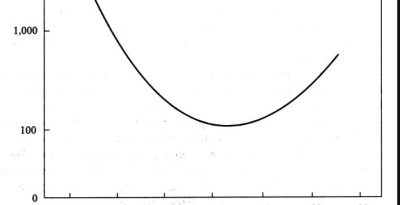
ADOT recently completed and opened the South Mountain Freeway in late 2019; which was heralded — rightly so — as a great accomplishment that will provide a much needed connection between the communities of Ahwatukee and Laveen, or more broadly a direct connection between South East and West Valley, bringing for example enhanced employment opportunities. This publicly funded project (funded mostly from sales taxes [4] ), at present, and by default prohibits non-motorized users; this leaves members of the public who choose to or must travel by bicycle excluded.
The Coalition of Arizona Bicyclists (CAZBike) in September 2016 requested that ADOT evaluate access to a very small portion, between two adjacent traffic interchanges, pointing out lack of frontage roads or other suitable routes:
9/29/2016 “(CAZBike) formally request(s) a response from ADOT on allowing bicyclists to use paved shoulders to connect between the western end of the Ahwatukee Foothills and 51st Avenue [since that was written, the since-added Vee Quiva Way would now be the most appropriate western terminus, and 17th Avenue would be the logical eastern terminus because that would coincide with the western end of shared-use path ADOT has since constructed]
And partially reiterates 11/18/2016 “What is the status of my request … and my request that this be done formally with documented response? I want this to all be public record so I want to do it the right way”
We received the following response 4/20/2020 [1], this would be over three years after the request was made. Unfortunately, the response fails to take into account the policy referenced [2], no traffic study of alternate routes was mentioned, and the decision appears arbitrary. The referenced policy makes no mention of ‘metro’ (or ‘urban’, or ‘rural)’. The reference to Table 1030-A as constituting documentation is specious — the route of the South Mountain Freeway portion of SR202 was not even sited for many years, possibly decades, after SR202 was added to that table. The policy demands a study, and that “Each case shall be judged on its own” yet it wasn’t.
We continue to request that ADOT prepare a traffic study of the area in question, and only then make a decision informed by those particular facts. Prohibiting bicyclists from using the shoulder may in fact be more dangerous; without an objective traffic study we cannot know. ADOT will need to assign the task to an engineer who is skilled in bicycle traffic; and should be familiar with the ADOT reference documentation[6], below.
In addition, it should be investigated how such matters get handled, as the process was frustrating, needlessly protracted, and at times even dishonest and non-professional. The personnel we were instructed to deal with which included at different times Mike Sanders (the bike/ped coordinator at the time the request was made), then on 6/8/2017 (per our meeting with Director Halikowski) Eric Gudino, and as of 12/6/2019 Mr. Gudino informed us our contact would be Donna Lewandowski (the current bike/ped coordinator). The few answers we received over the years were a mixture of: incomplete, lacking documentation, diversionary, falsehoods. See timeline[3]. It is quite clear after viewing some ADOT-internal emails dated 11/22 and 11/23/2020 at that time ADOT engineers were planning a traffic study, consistent with policy. Just after, all activity suddenly and secretly ceased; and we were never informed. We met in-person with numerous ADOT managers 6/8/2017, including Dallas Hammit, when the issue was raised by CAZBike, no one present had anything to say.
ADOT is a public agency and as such has a duty to operate openly and transparently.

 After over a decade of waiting, Arizona will become one of the last US states to place general restrictions on handheld cell phone use. Yesterday the Arizona legislature passed
After over a decade of waiting, Arizona will become one of the last US states to place general restrictions on handheld cell phone use. Yesterday the Arizona legislature passed 


 Thomas Armstrong
Thomas Armstrong

 Normally cited by those wishing
Normally cited by those wishing 



